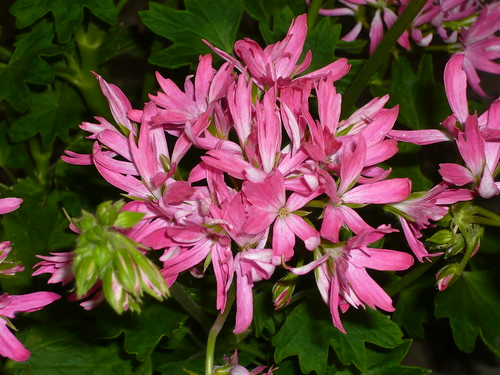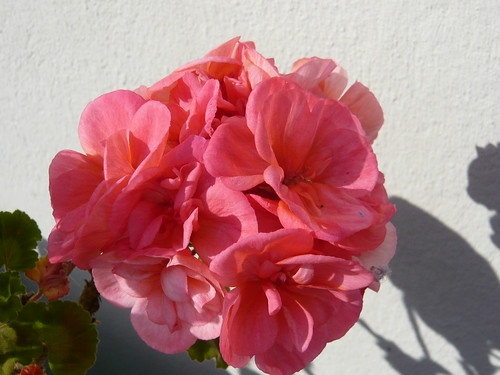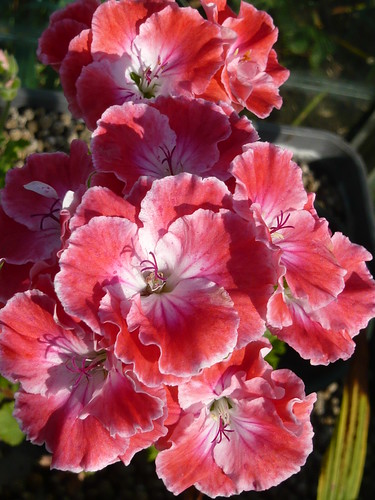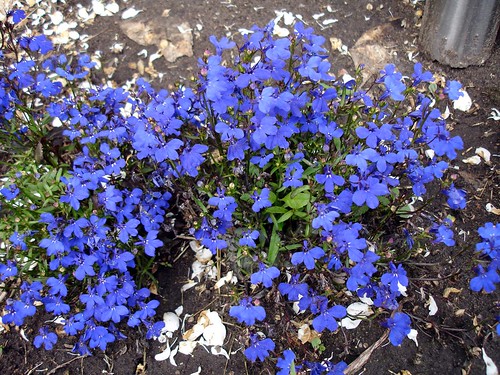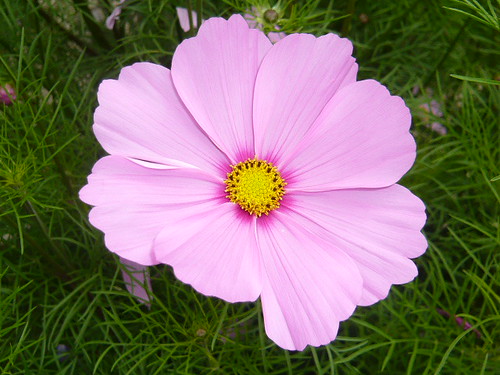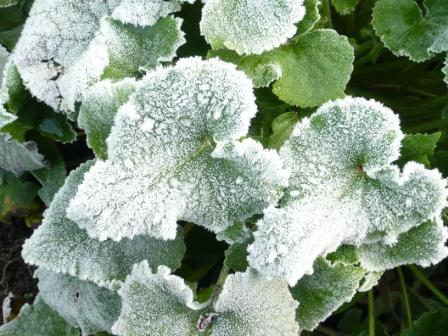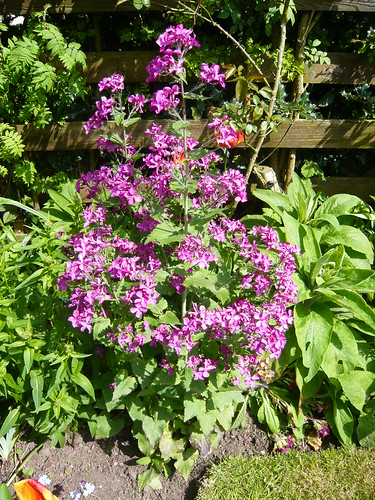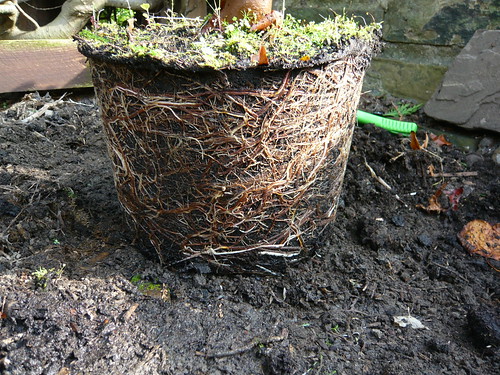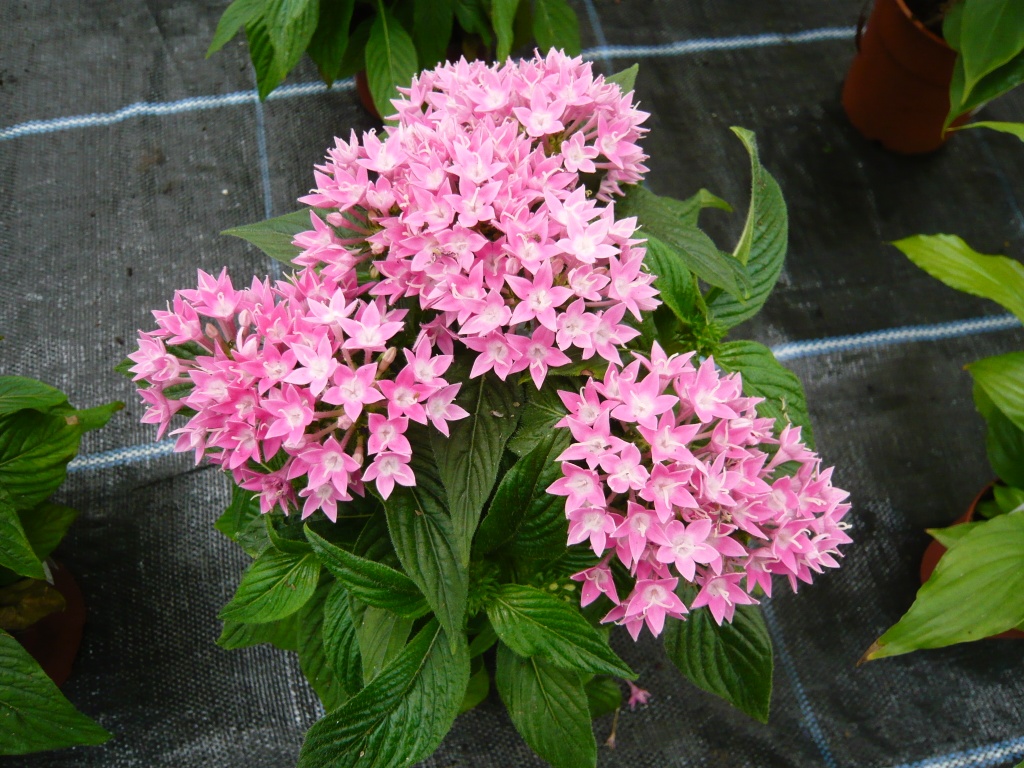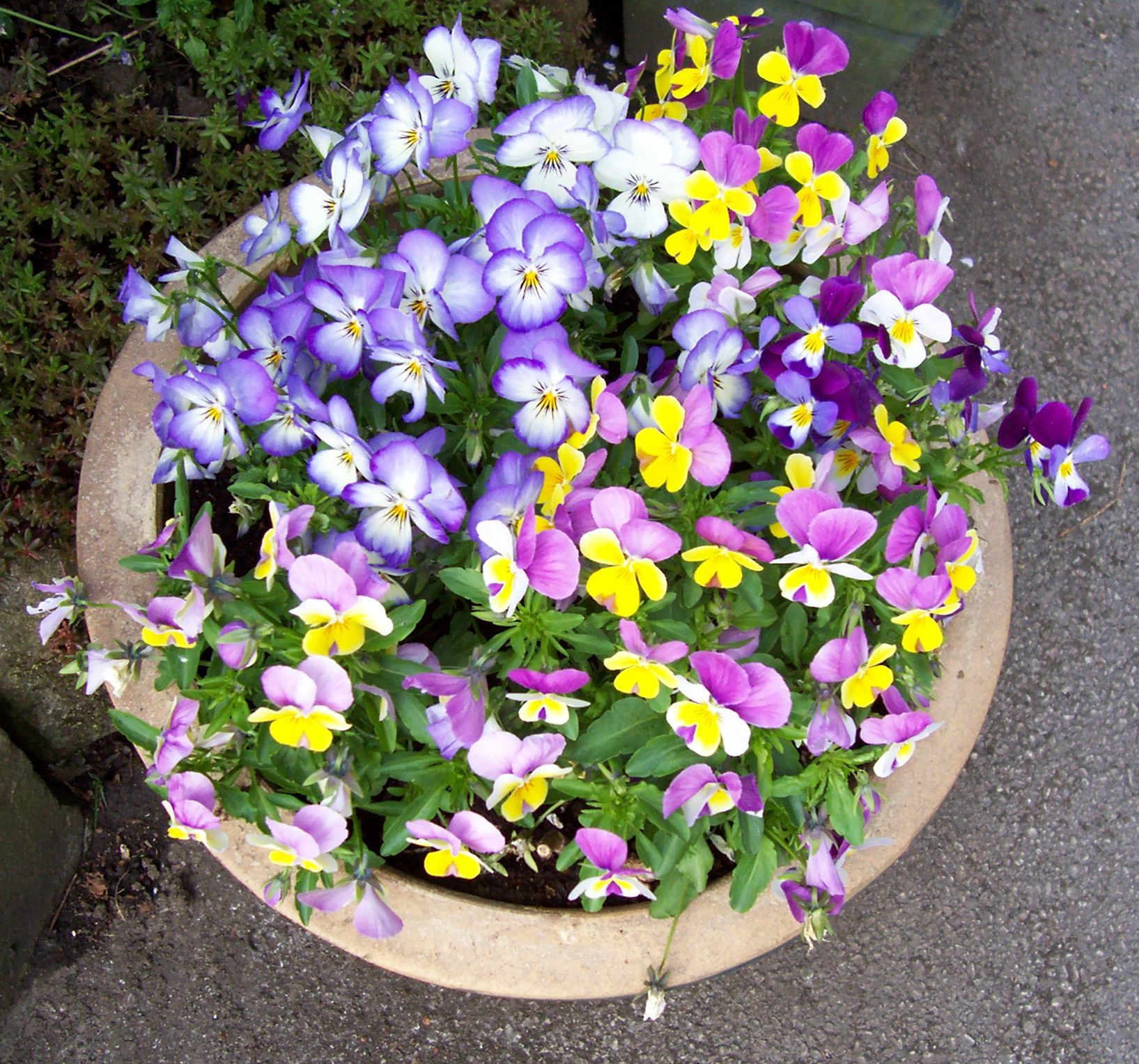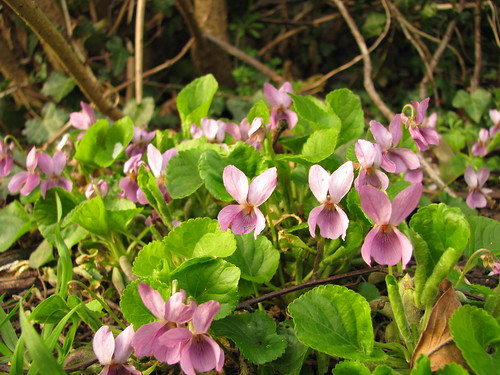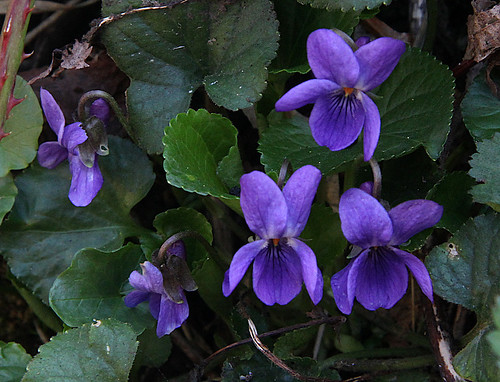Pelargoniums are Something Special
This pelargonium was sold to me By Fir Trees Nursery as called ‘Something Special’. The colour in bloom is clearer and softer pink than I can get on the computer screen and is something special in appearance.
In 2012 they have 3 brand new releases and have many new introductions which are new to us throughout the catalogue.
[‘The first new release is a decorative regal from a hybridist in Italy Riccardo Gallucci.
I was given a small plant of ‘Donatella Love’ by Derek Lee about 2 years ago who thought it unusual-as did we when we saw it flower. It is a striking variety and very free flowering with an unusual colour combination. I later found out from Derek that it was bred in Italy and he would put me in touch with Gwen Ward who passed my details on to Riccardo who kindly agreed to let us release his wonderful variety so that it available in the UK for you all to grow and enjoy. ‘Donatella Love’ is named after Riccardos wife.
The second new release is a sport found on our nursery about 3 yearsago from ‘Quantock Double Dymond’. It has green bracts rather than petals which gives the appearance of a green flower. It starts off as a small green rosebud shaped bloom, then as the weeks go by these extend to form little green catkins which gave us the name. Like ‘Quantock Double Dymond’ it has a lax habit so is suitable for small hanging pots or around a trough edge. It is a very tidy plant as it doesn’t drop petals anywhere! It is a compact plant and a relatively slow grower.
The Third and final new release is an angel bred by John Green and named after Pearl Sulman who many of you know as a very good nurserywoman and grower of pelargoniums until her retirement in 2010. Pearl along with husband Brian Sulman won many gold medals over the years with their displays of pelargoniums, specialising in miniature, angels and regals among a range of other pelargoniums. John raised the variety for Pearl to release at Chelsea 2011 but unfortunately due to Pearls illness they had to retire at the end of 2010 so John asked if we would release the variety and of course we were delighted to. I hope you will enjoy growing ‘Pearl Sulman’, a very free flowering variety.’
This variety looks a deeper shade of pink in the evening sunshine.
I bought these plants when passing a specialist Fir Trees pelargonium nursery in Stokesley
It is said to be a good exhibition variety and my plant has a good habit and several strong flower stems each with numerous pips.
The leaves are small and not deeply zoned with the usual ‘geranium’ fragrance
This Regal Pelargonium waited until late September to show any buds but the flowers were worth waiting for. I will cosset this plant through winter.
Photos are just a representaive sample of the pelargoniums you could be growing for next year


